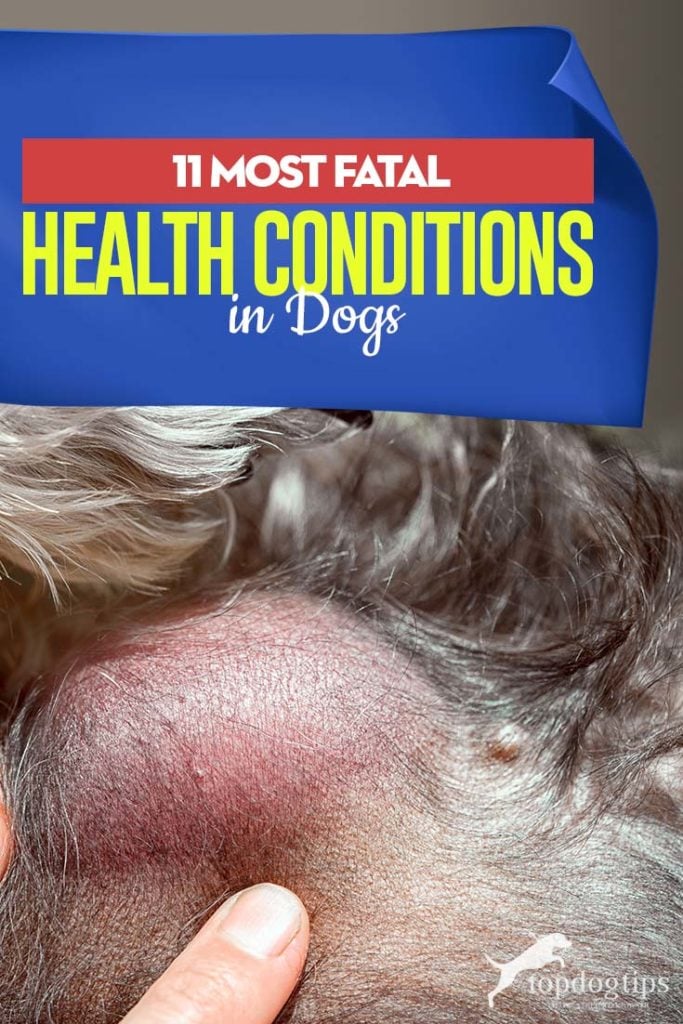
Table of Contents
When you adopt a dog, you expect to deal with some health issues eventually. While most common conditions dogs suffer from are mild and often treated easily, others can be severe and cause irreparable organ damage. It's best if pet owners are aware of the most deadly dog diseases to prevent them in the first place.
While some deadly diseases in dogs are inherited or unpreventable, your dog could avoid others like cancer. Knowing what those deadly dog conditions are, how to recognize signs and symptoms, and what to do to treat them can save your dog’s life.
Below are the eleven most deadly dog diseases that veterinarians are currently aware of.
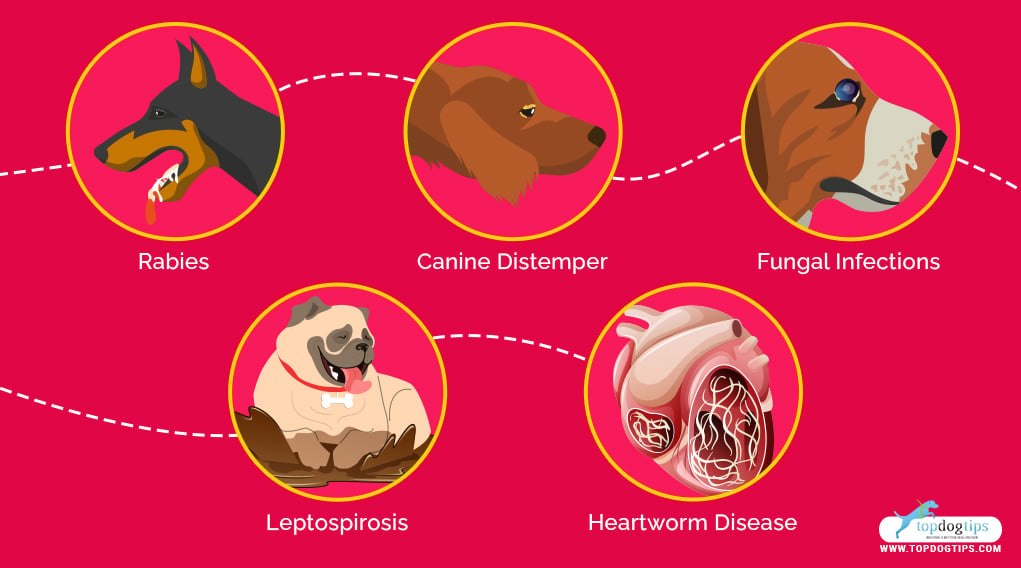
11 Most Deadly Dog Diseases by Mortality Rates
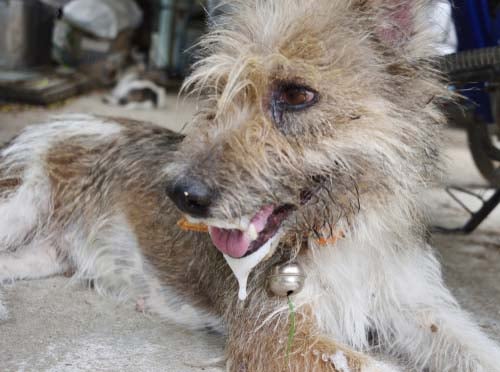
1. Rabies
Rabies is one of the most infamous deadly dog diseases that everybody has heard of. It is a virus that is always fatal.
Another reason why rabies is so feared is that humans can also get infected if they are bitten or scratched by a rabid dog.
This virus takes two to eight weeks to develop fully, and symptoms may not become apparent before those stages are reached.
That’s the reason why rabies is so deadly in dogs: there is no way to diagnose it before the symptoms appear, and it is too late to do anything when the problem becomes evident.
In fact, no test can diagnose rabies in live animals. It is usually diagnosed after a dog's death because the most accurate test requires brain tissue.
Symptoms:
A dog infected with rabies will display several signs of extreme behavioral changes like apprehension, restlessness, and, ultimately, aggression.
Dogs will often bite, lick, and chew the area on their body where an animal bit them. Fever is another common symptom of rabies in dogs.
As the virus progresses and the dog’s condition worsens, the animal may become extremely sensitive to light, sound, and touch.
In most cases, paralysis of the jaw muscles and throat occurs, which is why rabid animals start foaming at the mouth. In the end, come disorientation, weakness, seizures, and sudden death.
Treatment:
The good news is that rabies is a preventable disease. While there is no cure for it, if you keep your dog up to date with their vaccination, you won’t have to worry.
Rabies infection in vaccinated dogs is sporadic, even after receiving a single vaccine.
Unfortunately, rabies still kills tens of thousands of people worldwide, especially in less developed countries around Asia and Africa.
However, even in the US, this has been reported in all states except for Hawaii, but cats are reported more than dogs.
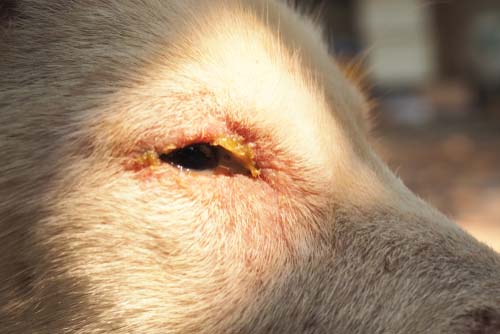
2. Canine Distemper
This is another vaccine-preventable but otherwise very deadly dog disease. It is a contagious viral illness, a relative of the measles virus that affects humans.
Unvaccinated puppies and older dogs are particularly susceptible to this illness. Canine distemper is transferred through direct contact and airborne exposure, which is what makes it so contagious.
Symptoms:
Canine distemper virus (CDV) attacks the tonsils and lymph nodes before attacking the respiratory, gastrointestinal, urogenital, and nervous systems.
CDV symptoms come in two stages. In the first stage, dogs usually suffer from fever, watery eyes, nasal discharge, and appetite loss.
Some other symptoms you may notice include coughing, vomiting, diarrhea, anorexia, and lethargy.
Your dog may also develop hyperkeratosis of the nose and paw pads, which causes the dog’s feet to become enlarged and hardened.
As the disease progresses to the second stage, some dogs may suffer neurological problems like head tilting, muscle twitching, paralysis, seizures, and convolutions.
Distemper is statistically one of the most deadly dog diseases as studies show a very high mortality rate among canines: 60% to 80% of dogs die from it.
Unfortunately, even the animals that survive this disease will likely suffer from irreparable, permanent damage to their nervous system.
Treatment:
We can’t cure the canine distemper virus, and treatment focuses on managing and relieving a dog's symptoms.
That includes IV fluids for diarrhea or anorexia, antibiotics if a secondary bacterial infection is present, and potassium bromide or phenobarbital to control the dog's seizures and convulsions.
Since there is no cure for this virus, prevention is vital. Keep your dog up to date with core vaccines and avoid contact with infected animals.
Be cautious when socializing with unvaccinated puppies or adult unvaccinated dogs.
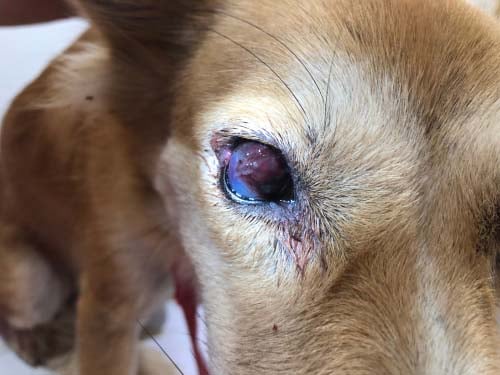
3. Fungal Infections
While fungal infections in dogs usually present only a mild nuisance, some of them can be quite serious and even fatal for animals.
Fungal infections that only affect a dog's skin are easily treated, but those that affect a dog’s entire body are dangerous, especially if they spread to the lungs, liver, or brain.
The most deadly dog diseases related to fungal infections include histoplasmosis, blastomycosis, Valley Fever, and cryptococcosis.
Valley Fever
Valley Fever (coccidioidomycosis) is a non-contagious, dust-borne infection that dogs can contract. It's mostly present in dry regions of the southwestern US and valleys of southern California.
Epidemics commonly occur when periods of heavy rain are followed by drought, which creates dust storms.
Valley Fever in dogs starts as a respiratory disease that can spread further and infect other tissues in a dog's body, particularly joints, bones, and eyes.
Symptoms vary depending on the severity of the infection and the organs that are affected. Signs include loss of appetite, cough, apathy, fever, enlarged joints, and diarrhea. Ulcers may appear on a dog’s skin as well.
Treatment includes the prescription of antifungal medications and often lasts from six months to a year.
Cryptococcosis
Cryptococcosis (cryptococcus neoformans) is a fungus found in soil worldwide, but you can also find it in bird manure, particularly pigeon droppings.
This disease affects the dog’s respiratory tract, eyes, skin, and central nervous system.
Symptoms of cryptococcosis in dogs are usually most noticeable in the animal's eyes and include inflammation of the eye and bleeding in the retina.
Other common symptoms are mostly related to the central nervous system and include head tilting, facial nerve paralysis, poor coordination, and seizures.
Treatment involves various antifungal drugs, which can be administered for several months for most severe cases. A dog may need surgery if lesions are present in the dog's nose or nasal cavity.
Histoplasmosis
Histoplasmosis in dogs is a non-contagious infection caused by the Histoplasma fungus found in the soil across the world. In the US, it is commonly found in the Midwest and southern parts of the county, particularly in river valleys.
A dog's lymph nodes and lungs will get infected first, but the gastrointestinal tract can sometimes be affected as well.
Symptoms are nonspecific because various organs can be involved. The most obvious signs include digestive issues like diarrhea and weight loss.
Coughing and difficulty breathing are also common. Other symptoms include fever, anemia, digestive ulcers, enlarged lymph nodes, skin sores, and various eye conditions.
Treating disseminated histoplasmosis in dogs is complicated. It involves administering antifungal drugs but also includes supportive care like adequate nutrition and constant hydration.
Antifungal treatment usually lasts for prolonged periods of time.
Blastomycosis
Blastomycosis in dogs is caused by the Blastomyces fungus that thrives in wet, acidic soils and rotting wood or other decaying vegetation.
In North America, it is prevalent in river basins and along the St. Lawrence Seaway and the Great Lakes. It is also found in bat and pigeon feces.
This infection usually spreads through a dog's lungs, but it can sometimes spread through the skin.
Common symptoms of blastomycosis in dogs include coughing, difficulty breathing, fever, weight loss, and apathy. Sometimes, the dog's lymph nodes may become enlarged.
Eye problems like light sensitivity, glaucoma, and even blindness can occur if the infection spreads to that area. Dogs with this infection often suffer from draining skin nodules.
Treatment of blastomycosis entails prolonged administration of antifungal drugs, usually Itraconazole. Dogs with breathing difficulties may need supplemental oxygen until their lungs start to function normally again.

4. Leptospirosis
Leptospirosis is an infectious disease that affects both animals and humans, and it can spread from your dog to you. A few different bacteria cause leptospirosis in dogs.
It can be contracted through direct contact with other infected animals, by ingesting infected meat or feces, or by getting in contact with anything contaminated by an infected animal's urine.
Symptoms:
Leptospirosis infection can present itself in many different and subtle symptoms, which can also vary in intensity. Some dogs may even be without symptoms at all.
Still, most canine leptospirosis signs include fever, increased thirst, urination, lethargy, sore muscles and stiffness in joints, loss of appetite, diarrhea, vomiting, and jaundice.
Severe leptospirosis cases can lead to swollen legs, bleeding disorders, lung disease, fluid in the chest or abdomen, and kidney failure.
Leptospirosis is one of the more deadly dog diseases because studies show that it's fatal to the animal in nearly half of the cases.
Treatment:
Since this is a bacterial disease, a veterinarian can treat it with antibiotics. However, it is essential to start the treatment as soon as possible to increase survival.
Hospitalization and supportive care for the dog are almost always necessary.
Vets can prevent leptospirosis with commercially available vaccines that protect dogs for at least 12 months.
While no vaccine can provide absolute protection from this deadly dog disease, keep your pet up to date with core vaccines to minimize the risk.
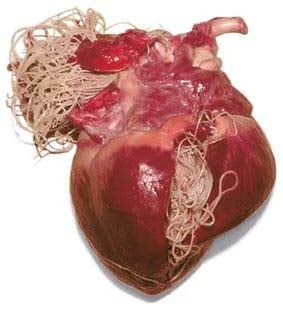
5. Heartworm Disease
This is another serious dog disease that can result in death but can be prevented with proper heartworm medicine.
Some dog owners don’t use any preventive medications, even though dogs can get heartworm disease from a single bite of an infected mosquito.
And even though dry climates were thought to be safe from heartworm, this disease has been reported in all US states.
This parasitic disease most commonly attacks a dog’s heart and surrounding blood vessels, although you can sometimes find worms in the lungs and other areas of the circulatory system.
Adult worms can live up to five years and cause many serious health complications in dogs, including death.
Symptoms:
The progression of canine heartworm disease is divided into four classes based on the severity and symptoms exhibited.
The first class is often asymptomatic, which means that dogs usually don’t show any disease signs.
Class II includes symptoms like coughing and getting tired quickly, usually after a moderate level of exercise.
Dogs with Class III heartworm disease may suffer from weight or muscle loss, dry or greasy hair, extreme intolerance to exercise, difficulty breathing, and fluid accumulation in the abdomen.
Class IV heartworm disease is the most serious stage in which dogs develop a life-threatening condition known as caval syndrome.
Caval syndrome in dogs means that there are too many heartworms present in a dog’s heart.
The worms block the flow of blood into the heart, and at this stage, the disease is considered fatal and non-treatable, and treatment instead focuses on providing comfort for the animal.
Treatment:
Treatment for heartworm in dogs involves medication to kill the circulating worms. In most cases, that entails three injections spread over one month.
Hospitalization is needed during the administration of these injections or even beyond that if your vet recommends it.
Some medications like doxycycline or prednisone are prescribed to decrease your dog's chances of reacting badly to the death of the worms.
Some dogs will also be given pain medications, diuretics if there is fluid in the lungs, and various heart medications, sometimes necessary even after heartworm disease gets treated.
Surgery is the last option for dogs with caval syndrome, although it is a hazardous procedure, and most dogs die regardless of the treatment.
Caval syndrome on its own can be considered one of the most deadly dog diseases, as studies show extremely high mortality rates in dogs and cats.
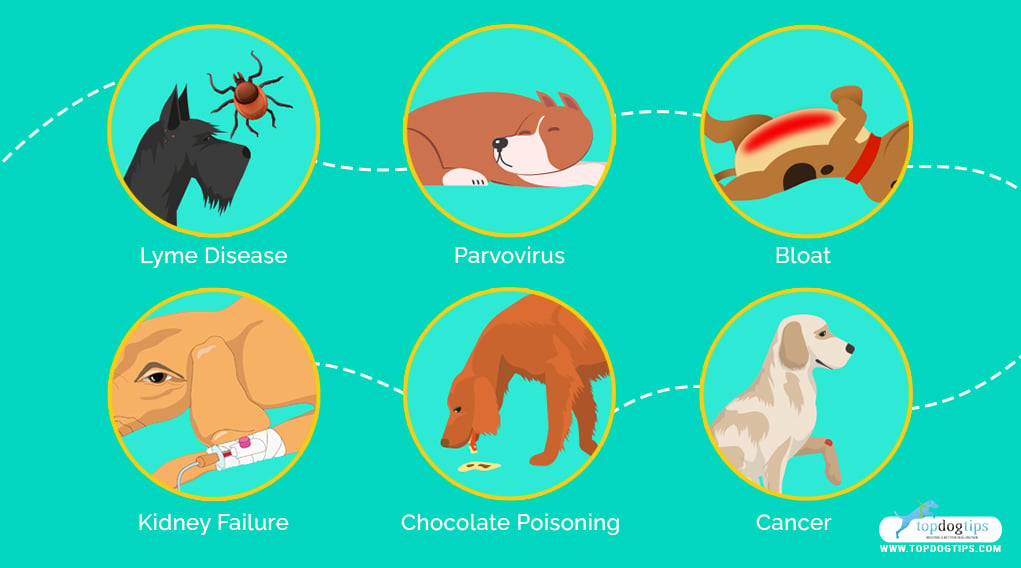
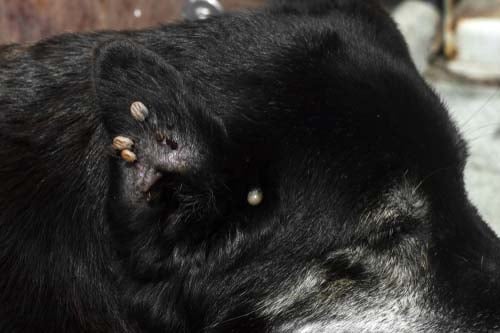
6. Lyme Disease
This disease is a tick-borne illness that can be fatal if not treated, although that is not such a common occurrence.
Lyme disease can spread very fast since it is enough for an infected tick to be attached to your dog for 36-48 hours before your dog becomes infected, too. It can also be found everywhere around the world except for Antarctica.
A licensed physician can prevent the disease with vaccination.
Symptoms:
The most common symptom of Lyme disease in dogs is lameness in their limbs. Stiffness in joints and loss of appetite can also occur, such as lethargy, fever, and enlarged lymph nodes.
Kidney failure is the most serious symptom of Lyme disease, but it only develops if the disease is left untreated.
Treatment:
The vast majority of dogs respond well to antibiotic treatment with Amoxicillin or Doxycycline.
Symptoms usually go away after four weeks, but some dogs may suffer from recurring symptoms. Vaccinate your dog for Lyme disease and use preventive tick medicines to minimize the risks.
You should also check your dog for ticks often if he spends a lot of time outdoors.

7. Parvovirus
Canine Parvovirus (CPV), or Parvo, is a viral disease that attacks dogs’ intestines and hearts.
Since Parvo vaccines are a part of the core vaccines administered to dogs, unvaccinated puppies and dogs in shelters or breeding facilities are at the highest risk of infection. In most cases, Parvo is spread through contaminated feces.
Parvo is a highly contagious and resilient virus, and while fatalities occur, it's one of the more deadly dog diseases with very haphazard mortality rates.
Retrospective studies have estimated the death rate among dogs with parvovirus between 20% and 70%.
Symptoms:
Signs of parvovirus in dogs include weight loss, vomiting, severe diarrhea, and lethargy. Dogs with Parvo will usually have a poor appetite.
Other less common symptoms include dehydration, weakness, and depression.
Treatment:
Immediate veterinary attention is necessary if you suspect that your dog has Parvo. The disease requires intensive care, and the prognosis is significantly better with early treatment.
Your dog will likely get hospitalized and isolated, and your vet will provide supportive care and keep an eye on any signs of secondary infections.

8. Bloat
Gastric dilatation-volvulus (GDV), commonly known as canine bloat, is a serious health condition in which a dog’s stomach twists and fills with gas.
While the exact cause of bloat is unknown, large or giant breeds are more susceptible to it. Also, male dogs are more likely to suffer from bloat.
It is believed that eating a large amount of food or eating too fast can lead to this condition and eating from a raised bowl. Stress may also be a contributing factor.
GDV in dogs is dangerous because the stomach can pressure the dog's diaphragm and cause breathing problems.
It can also lead to a dog's stomach rupture and damage to different tissues, including the spleen's tissues.
Ultimately, canine bloat can become fatal if left untreated.
Symptoms:
Luckily, bloat symptoms are pretty noticeable, and if you spot any of them, take your dog to the vet immediately. Canine bloat signs include retching and inability to vomit, salivating, restlessness, and enlarged stomach area.
As the condition becomes worse, your pet may also experience rapid heartbeat, shortness of breath, weakness, and collapse.
Treatment:
Treatment for canine bloat will depend on the severity. First, your vet will insert a tube down your dog’s throat all the way to his stomach to release the built-up pressure.
If the tube can’t pass due to the stomach's twisting, your vet may put a large needle through your dog’s belly to release the pressure.
Dogs can sometimes go into shock if the condition is severe, in which case your vet will give your dog IV fluids, steroids, or antibiotics. Your vet will then use X-rays to determine whether the stomach is twisted.
If it is, your dog will need emergency surgery. Ultimately, bloat is one of the lesser deadly dog diseases on this list because if treated on time, the prognosis is good; however, if treated too late, then it's fatal.
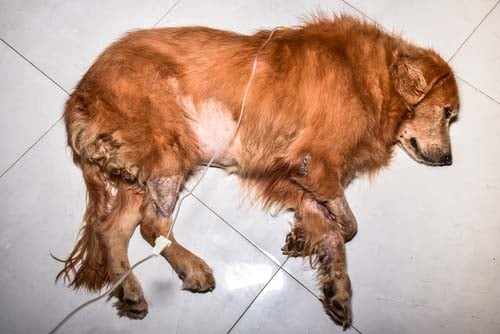
9. Kidney Failure
Kidney failure in dogs is a condition that either develops independently or due to some complications related to certain medications or other diseases.
The one that develops on its own is called chronic kidney failure, and it is usually caused by genetic predisposition, which means that it is not preventable.
The one cause of kidney failure that is preventable is dental disease. Acute kidney failure occurs suddenly and can be severe.
Both conditions can be fatal to dogs, but chronic kidney failure usually takes time to develop. On the other hand, you can treat acute kidney failure.
Also, chronic kidney disease is more common in senior dogs. It is estimated that more than one in 10 dogs will develop kidney disease over their lifetime.
Symptoms:
Signs of canine kidney failure include increased thirst, increased or decreased urination, loss of bladder control, lethargy, and decreased appetite.
Bad breath can also be present in some cases, especially in acute kidney failure caused by dental disease.
Treatment:
Acute kidney failure treatment is focused on treating the underlying cause if the cause is known.
For example, antibiotics are commonly used to treat an infection, while antidotes are prescribed if kidney failure is caused by poisoning.
Dialysis is often recommended to assist the kidneys in removing toxins from the blood.
Chronic kidney failure in dogs is terminal, making this stage one of the more deadly dog diseases out there, so treatment is only focused on managing the condition and improving the quality of life for the dog.
This includes fluid therapy, different medications, and changes in diet.

10. Chocolate Poisoning
Most dog owners know that chocolate is toxic to dogs (theobromine poisoning), and this condition can be fatal.
While this is rare since death only occurs in 1 out of 3000 cases of chocolate poisoning, it remains a very common culprit of poisoning in dogs.
The main toxic components in chocolate are theobromine and caffeine, both methylxanthine alkaloids that primarily attack a dog’s nervous system.
Not all chocolates contain the same amount of these alkaloids. White chocolate, for example, has the lowest methylxanthine concentration, while plain or dark chocolate (high cocoa percentage) has very high levels of caffeine and theobromine.
Studies show that less than 100g of dark chocolate will kill a 20-pound dog.
That’s why small pups are susceptible to chocolate, as well as dogs that have a history of pancreatitis, diabetes, or heart problems.
Symptoms:
Symptoms of chocolate intoxication in dogs include vomiting, diarrhea, increased urination, panting, pacing, and shaking.
More severe cases can also lead to dogs having an irregular heartbeat, heart attack, tremors, and seizures. Symptoms of canine chocolate poisoning can last up to 72 hours.
Treatment:
Treatment for dog chocolate intoxication depends on the type and amount of chocolate consumed.
Your vet will give your pet medications to induce vomiting and activated charcoal to stop methylxanthine absorption.
Supportive care, especially therapy with IV fluids, can stabilize a dog and induce toxic substance excretion.
In more severe cases where arrhythmia or elevated heart rate is present, your vet will administer beta-blockers.
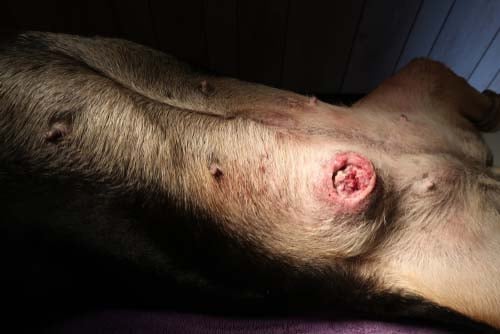
11. Cancer
Cancer is the leading cause of death in senior dogs that are older than 10 years. While this is one of the most deadly dog diseases, more than half of all cancer types in dogs can be treated if caught early.
Cancer is the name given to a collection of related diseases characterized by dividing body cells that spread into surrounding tissues.
Most of the canine cancers form solid tumors, except leukemia and other cancers of the blood.
While the causes of cancer in dogs are not definitely proven, it is believed that improper diet and lack of exercise play important roles, among many other things.
However, environmental factors and genetic predisposition probably carry a greater responsibility in developing cancer in dogs (and people).
Symptoms:
Since cancer can appear anywhere in the dog’s body, the symptoms can vary a lot.
However, some of the more common signs of canine cancers include lumps on the skin, unusual odors, sores that won’t heal, weight loss, loss of appetite, and lethargy.
Treatment:
Cancer treatment depends on the severity and location. Chances of survival are usually much higher if the cancer is found early.
The three basic treatments for cancer in dogs include chemotherapy, radiotherapy, and surgery. While only one of these can be enough in some cases, a combination of two or three is usually required.
Summary
While the above-mentioned deadly dog diseases can be fatal to your pet, most of them are preventable either with vaccine immunization, preventive medicine, or by taking certain precautions like feeding your dog a high-quality and well-balanced diet, avoiding areas with unvaccinated dogs, and so forth.
Early discovery of these potentially fatal canine conditions can significantly increase the chances of successful treatment and survival, so take your dog to the vet for regular checkups or if you notice any changes in their health and behavior.
READ NEXT: 25 Most Serious Dog Health Symptoms That Cannot Be Ignored
Want to share this?


